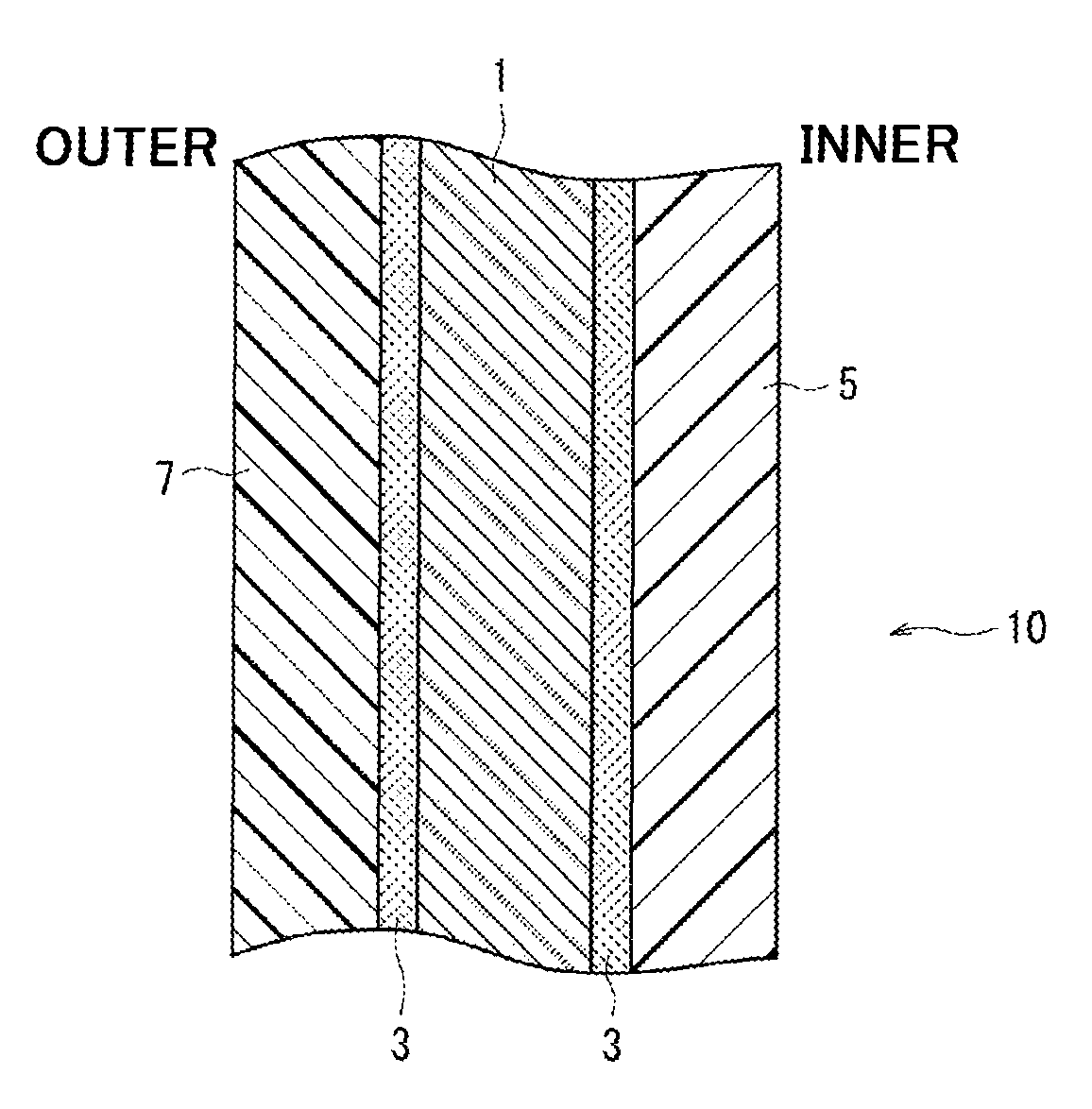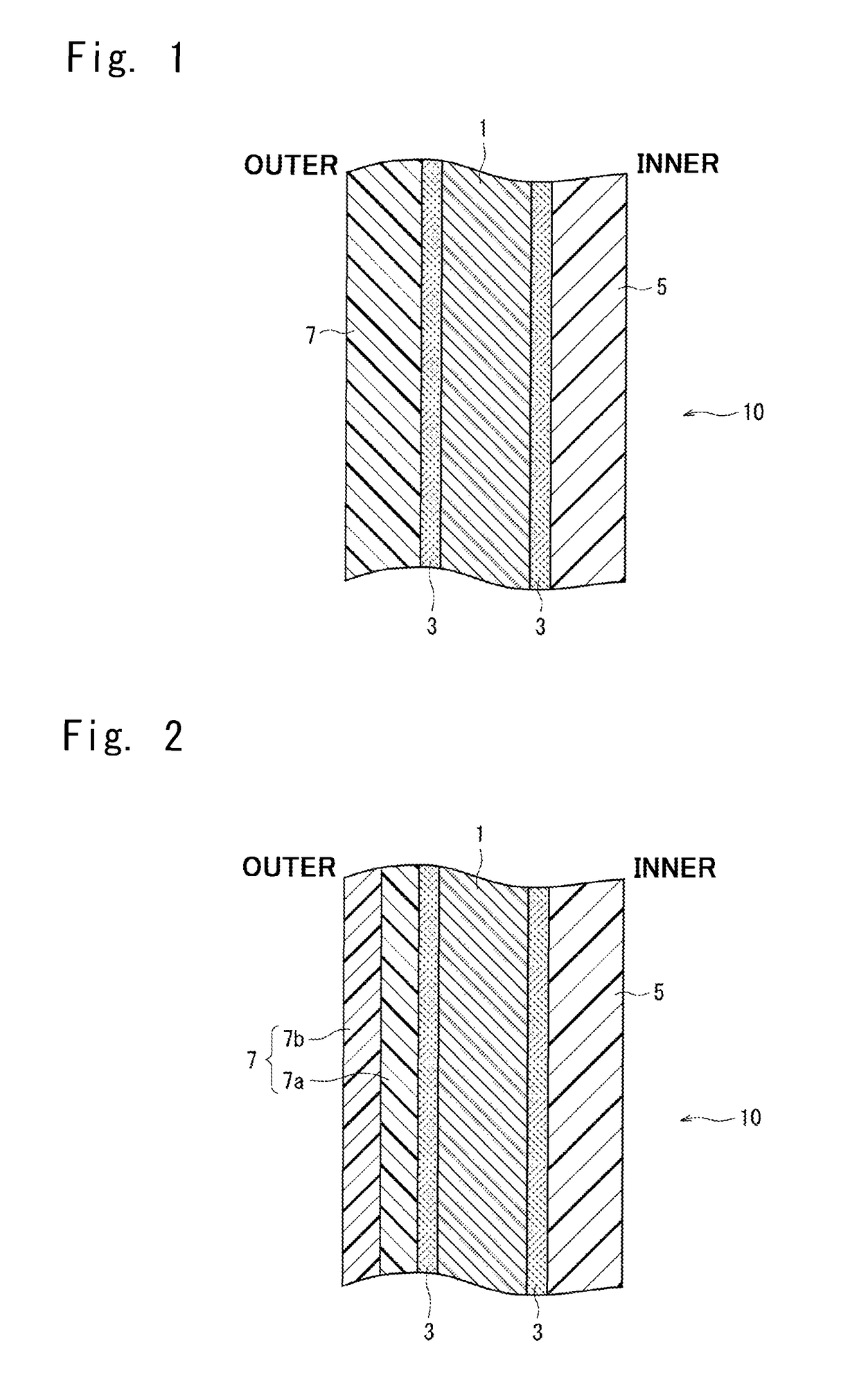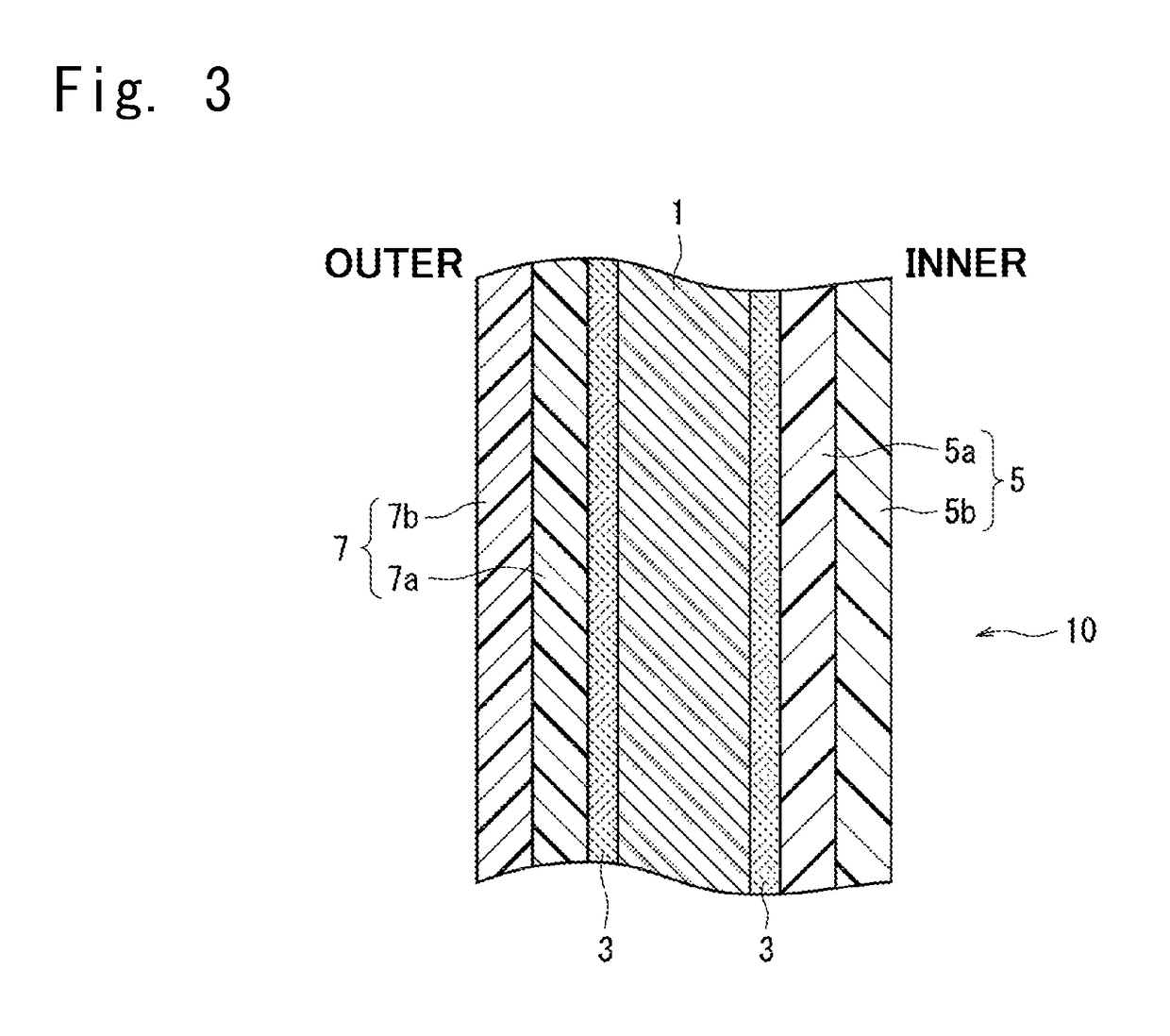Resin-coated seamless aluminum can
a technology resin coatings, applied in the field can solve the problems of non-chromium inorganic surface treatment films, resin coatings that do not fully adhere to each other, and the formation of seamless aluminum cans, etc., to achieve the effect of high degree of adhesiveness, low crystallinity, and rich softness and flexibility
- Summary
- Abstract
- Description
- Claims
- Application Information
AI Technical Summary
Benefits of technology
Problems solved by technology
Method used
Image
Examples
examples
[0073]The invention will now be described by the following Experiments.
experiment 1
[Production of the Polyester Resin-Coated Aluminum Sheet]
[0074]A 0.28 mm-thick coil sheet of an aluminum alloy, JIS3104, was conversion treated on its both surfaces with the “Alodine N-405” manufactured by Nihon Parkerizing Co. to form a surface-treating film of zirconium phosphate thereon in an amount of 10 mg / m2 calculated as Zr. The surface that becomes the outer surface of the can was roll-coated with a polyester phenol type primer, dried, baked at 250° C. to form a primer of a thickness of 0.9 μm thereon, and was taken up.
[0075]While rewinding the coil sheet, a polyester resin was extrusion-laminated on both surfaces thereof. On the outer surface of the can, there was formed a polyester resin coating of a two-layer structure comprising a lower layer of a 7-μm thick polyethylene terephthalate containing 15 mol % of isophthalic acid and 0.1 mol % of trimellitic acid (hereinafter expressed as PET / IA15TMA0.1) and an upper layer of a 3-μm thick PET / IA7.5. The polyester resin on the ...
PUM
| Property | Measurement | Unit |
|---|---|---|
| thickness | aaaaa | aaaaa |
| thickness | aaaaa | aaaaa |
| thickness | aaaaa | aaaaa |
Abstract
Description
Claims
Application Information
 Login to View More
Login to View More - R&D
- Intellectual Property
- Life Sciences
- Materials
- Tech Scout
- Unparalleled Data Quality
- Higher Quality Content
- 60% Fewer Hallucinations
Browse by: Latest US Patents, China's latest patents, Technical Efficacy Thesaurus, Application Domain, Technology Topic, Popular Technical Reports.
© 2025 PatSnap. All rights reserved.Legal|Privacy policy|Modern Slavery Act Transparency Statement|Sitemap|About US| Contact US: help@patsnap.com



